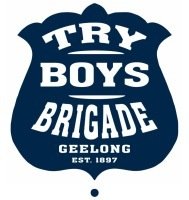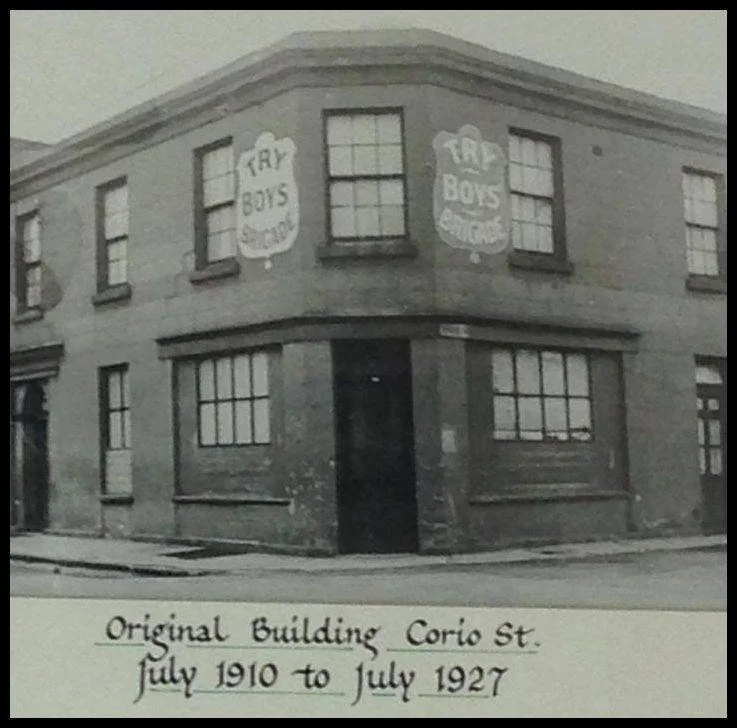
100 Years of History
“There is a growing desire in this land to say that the needs of the less blessed in worldly stances should be a matter for the State; the simple fact is that the less the State has to do with such work and the more great-hearted men and women accept the responsibilities of their common humanity, the better. One man will accomplish more in the lives of those they seek to serve than ten government departments would accomplish in a century.”
— Extract from a story in the Geelong Standard of 1924 entitled 'A Worthy Service'.
THE FOUNDER
Unearthing the legacy of Charles Shannon and the Geelong Try Boys' Brigade's century-long journey.
THE BEGINNINGS
Charles Shannon's vision transforms Geelong – the birth and Initial years of the Geelong Try Boys' Brigade.
THE EARLY YEARS
The Geelong Try Boys' Brigade navigates challenges and expands horizons from the early 1900s to the post-war era.
THE LATER YEARS
The Geelong Try Boys' Brigade adapts to new challenges and preserves heritage in a changing landscape.
Our Activities
-
A broad base of activities continued through the 'fifties and in 1957 the Underwater Exploration and Fishing Club was formed. Boys fished at resorts along the coastline and also spent time diving at Eastern Beach pool for broken bottles, wood, debris and - at the request of people walking along the promenade - watches that had fallen through the decking.
Until now sport had not assumed the great role it would play in years to come. The 'sporting revolution' began during the early 'sixties when the popularity of table tennis and basketball saw them added to the brigade's activities. Teams entered in local competitions met with great success.
A man who was to remain a stalwart of the club came onto the scene at this time. Evan Burns joined the committee in 1965, mainly through his long involvement with the scouting movement, and since his retirement from business ten years ago has been club manager. Now aged 75, with twinkling eyes and a wide smile, it is easy to understand his popularity with the thousands of boys he has helped for more than thirty years.
Burns' first association with the club came in 1956 when his two sons joined a scout troop with the Brigade and by the late 'sixties he was appointed Scoutmaster. All members of the Burns family have received a Lance Nicholls Memorial Trophy which has been awarded annually since 1947 to a scout who has done most for scouting during the year. Lance Nicholls was only fifteen years old when he took on the job of organising and leading the scouts during the war.
The Brigade's format has changed with the times - perhaps that adaptability explains part of its reason for continued success. Today the carpentry and handwork classes remain but there is no Sunday school or bootmaker and printing shops.
Burns' son, Doug, an antique restorer, runs the carpentry classes each week in the Brigade's woodwork room which houses six large work benches, a power saw, buzzer and grindstone. On the wall hangs a board - The Keith Birrell Memorial Trophy - which lists the boys who have won the trophy each year since 1978. Keith Birrell began as a Try Boy in the fretwork class and went on to become a committee member.
-
A simple line in the minutes recorded in 1925 stated that the committee "purchased a basketball." Members would not have realised then that more than half a century later basketball would become the major activity of the Brigade. The game grew in popularity after the Americans introduced it during the Second World War. By the 'sixties there were thirty teams registered with the Geelong Amateur Basketball Association and twenty-eight under 18 teams in the Geelong Try Boys' Basketball Club. There was also the oddly titled Try Boys Girls' Basketball team which was the fourth team to be registered in Geelong.
The move was an immediate success. It had been prompted by the greater emphasis on indoor sports, particularly basketball, which was rapidly developing as a major sport in the region. The only other indoor basketball venues in Geelong at this time were the YMCA and St. Mary's halls in the city. However, the Corio Leisure Centre opened just before the Try Boys' complex was completed.
Committeeman Clarrie Kerger took on the busy job of chairman of the basketball section of the Brigade with eight teams fielded by the club from its new home. Both he and the committee were more than pleased when the coach of the visiting American High School Basketball Teams said the Try Boys' stadium floor was one of the best they had ever played on.
Both men's and women's basketball continued to grow in popularity; extensions were added to the building while Brigade funds were continually boosted from the hire of the stadium.
New appointments in 1987 saw Evan Burns appointed part-time manager, Miss Janine Jewel became basketball administrator and Dr. Rod Taylor joined the committee.
In 1990 the 12 member committee continued to make its facilities available to schools, youth groups, badminton clubs, indoor soccer and private family groups as well as sponsoring the Try Boys' basketball club with a grand total of eighty mens' and womens' basketball teams playing in five divisions. Doug Burns became group leader of the 1st Geelong Scout Group - a position he had held previously.
-
The rationalisation and restructuring of the Victorian scout movement in 1993 saw a big change for the Brigade. It meant the demise of some groups and because of falling numbers the 1st Geelong was amalgamated with the 14th Geelong St. Andrews to form 1st Eastern Park. This ended the eighty-five year association of Try Boys and the 1st Geelong Shannon's Own Scout Group.
The scouts' and cubs' section of the Brigade was formed in 1909 - soon after Sir Robert, later Lord Baden Powell, founded the movement in England - by the manager of the day, Percy Stevens, who was Geelong's first scoutmaster. Brigade members formed a Troop of Imperial Boy Scouts and were affiliated with the movement in Melbourne. All the Geelong scouts were united under the Geelong Scout Council with the mayor as president. The Try Boys were officially known as No.3 Troop, Geelong.
Their first camp, the Easter of 1910, saw the boys and their officers march to Torquay where they spent four days under canvas before marching back to Geelong. Records state their luggage was transported "in a conveyance".
The Imperial Boy Scouts movement continued to gain ground and in 1923 sent a representative of the 1st Geelong Troop to the Empire Jamboree and also assisted a Try boy belonging to another troop to go to the Jamboree. The Commonwealth Government granted one hundred free passages to boy scouts to attend this Empire Jamboree held in England during the Great Exhibition - twenty-five of these were allotted to Victoria. The committee applied for and was granted one free passage for T. Fowle . Two other Geelong boys were successful including R. Ritchie, a Try boy who was a member of another troop.
Harold "Boss" Hurst, a Brigade committee member and District Scout Commissioner of Geelong, was in charge of the Geelong contingent of boy scouts. He became the father of the scouting movement in Geelong and founded the original Eumeralla scout camp on the banks of the Anglesea River.
An accomplished sportsman "Boss" became interested in scouting in 1923 and devoted the next fifty years to helping build the characters of Geelong youth. He was a leading figure in the region in amateur athletics, rowing, boxing and football. He was a member of the Geelong Football Club committee and for some years coached the Geelong College first crew.
The 1st Geelong Troop was renamed the 1st Geelong Troop Shannon's Own and there were so many boys wanting to join it was necessary to divide it into the 1st and 3rd Geelong Shannon's Own. Percy Stevens was Scoutmaster of the 1st and his deputy, E. A. Alsop, became Scoutmaster of the 3rd.
A successful Easter camp was held at Ocean Grove in 1925 when E. A. Alsop "conveyed all the camp equipment along with those boys who did not have bikes." Apparently the rest of the boys rode their bikes from Geelong!
It was during this camp that Alsop and Percy Stevens decided it would be a good move to purchase a block of land at Ocean Grove and build a shed on it so the scouts could have a permanent site for camping. They inspected some land which they later reported back to the committee would make "a splendid permanent camping ground for the scouts." The land was for sale at £18 ($36) but Percy Stevens offered £12 ($24) with a final figure of £14 ($28) being accepted.
The land was bought and improvements were made. Trees were planted and a mess hut and several patrol huts were built by the boys with donated materials.
A handful of men associated with Try Boys throughout its history spent the major part of their lives working to help Geelong youth. Percy Stevens was one of these men who strongly believed in the scouting movement's ability to foster adventure, challenge and friendship in the youth who participated. Taking over from Joseph Yeowart in 1899 he enthusiastically and unselfishly devoted almost half a century to the welfare of more than five thousand boys who regarded him as their friend.




